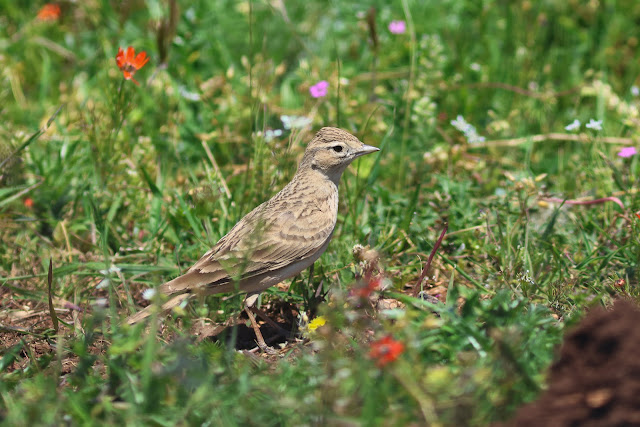It's been a full on last couple of days. I did Pomorie yesterday morning here before heading to Shabla Tusla here and then Durankulak here to meet up with Pavel and overnight at Branta Lodge and today I was back at Cape Kaliakra at dawn here before popping into Bolata and then did the Balgrevo Steppe here before heading to the airport to fly back to London. Overall in the last 11 days I managed 193 species in a few days birding in between herping and visiting family and Bulgarian Ebird ticks include Ruddy Shelduck, Red-necked Phalarope, Eastern Orphean Warbler, Griffon Vulture, Eleonora's Falcon and the Little Bunting putting me on 281 for Bulgaria now.
Very surprisingly I didn't see a single Little Gull on this trip (there are usually hundreds this time of year) and also just a couple of Black-necked Grebes (usually many off Cape Kaliakra) and very few Yelkouan Shearwaters (usually thousands). This year plenty of Ortolans, Turtle Doves and Squacco Herons.
Final Trip Report HERE .
Greater Flamingos at dawn over Pomorie
Female Red-necked Phalarope at Pomorie (with Litte and Common Tern above and below)
Is there any smarter spring wader than full summer plumage Grey Plover?
Squacco Heron at Shabla Tusla- Squaccos have been prominent this spring, according to Ebird I've logged 20 birds
This female Rosy Starling was a surprise find, presumably an early migrant
The first Black-headed Bunting of the trip
Not sure I've ever actually managed to click a Thrush Nightingale before. Looks like a second-calendar year bird with longer worn inner greater coverts although no sign of the typical buff spots in juvenile plumage. There's a hint of a dark lateral throat-stripe and the flanks appear grey and darker than Common Nightingale. Not sure if the photo is sharp enough to see anything in the wing formula, in Thrush Nightingale p2 generally equals 4 and wing tip is p3, while p1 is shorter than primary coverts. Common Nightingale is p2 =4/5 or 5 with wing tip p3 and p4 and p1 longer than primary coverts. The spacing of primaries is supposed to be even in Thrush and not increasing to the tip as in Common Nightingale. Here's the song of a Thrush Nightingale recorded at Cape Kaliakra previously displaying the typical less flutey and melodic song than Common Nightingale with more scratches and clicks.
https://macaulaylibrary.org/asset/337277421 .

Migrating terns at dusk over Durankulak was incredible- we must have had at least 500 marsh terns coming in over the lake , Whiskered Terns above
As Marsh Terns dropped onto the lake Med Gulls, Sandwich, Common and Caspian Tern (above) were migrating off shore
Mainly White-winged and Whiskered Terns (also Blacks in smaller numbers)
Alpine Swift (above and below) at the Cape
White-winged Black off the Cape
'Cape Kaliakra Wheatear'- either a morph of Pied or a Pied x Eastern Black-eared Wheatear. More on these birds
hereBee-eater
Red-backed Shrike on the Steppe
Short-toed Lark on the Steppe
'Romanian Wagtail' M.f. dombrowskii
Typical female flava-types above and a very bright female below
Flava/Beema-type Yellow Wagtail showing some extra pale in the ear coverts. Pavel and I came across a flock of Yellow Wagtails at Durankulak camping site which contained a nice mix of races including Balkan (Black-headed), Grey-headed, Blue-headed, Romanian and Syke's-types (beema-types) too. Most birds were females suggesting that males might predominately move earlier in the season.























No comments:
Post a Comment